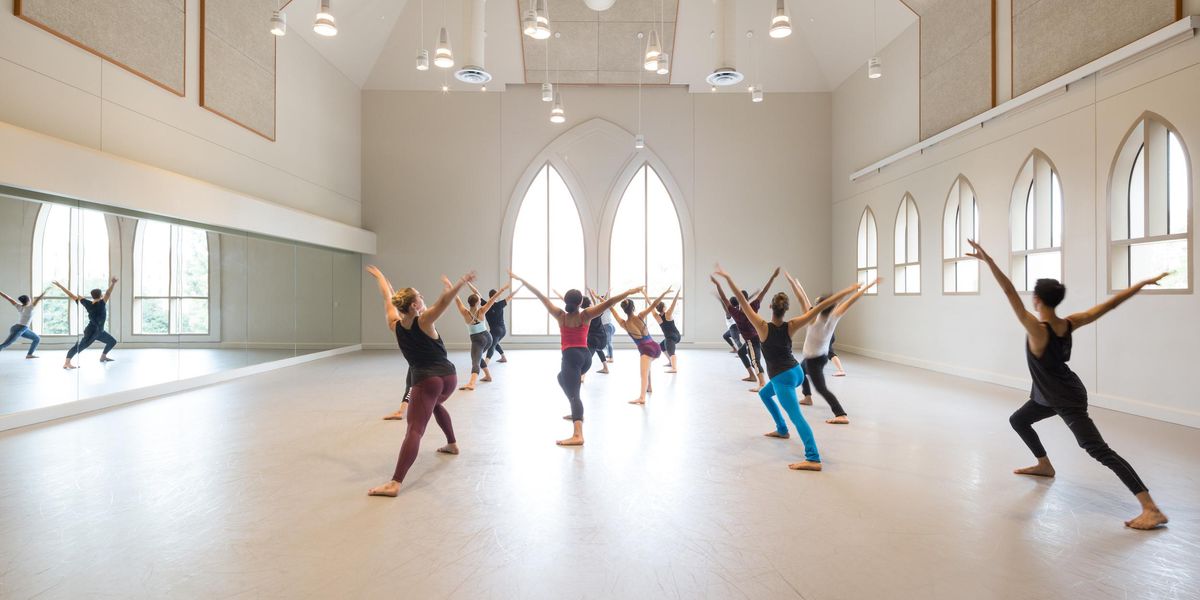Not Just a Number
How age affects the ensemble’s casting
The cast of Kinky Boots. Photo by Matthew Murphy, Courtesy O+M Co.
In Hollywood, it seems it’s always kids putting on a show. But on Broadway, musicals are populated with dancers who may indeed be kids and those who manifestly aren’t. Often the shows themselves dictate how old an ensemble must be: In Grease, dancers have to pass for teenagers; in Fiddler on the Roof, they’re Russian villagers. But there are always shows like Oklahoma!, where neither youth nor maturity is absolutely required and directors and choreographers can decide whether to go with freshness, experience or a combination.
Ask around and you find there are all sorts of considerations that go into that decision. It isn’t just about young bodies versus sore knees, or know-how versus rawness. Cultural elements and even economics come into play.
For example, says Kathleen Marshall, it can be too expensive to hire understudies for all the principals. And when ensemble members double as understudies, ages will vary, as they do in her current project, Diner. Jerry Mitchell says he prefers just that kind of age diversity. But, he remembers, the dancers in Hairspray were all making their Broadway debuts; and lately he’s been choreographing on dancers over age 60 for Gotta Dance, based on the 2008 documentary film about a basketball team’s senior cheerleaders. Warren Carlyle could hire dancers of any age for the plotless revue After Midnight, and he cast mostly seasoned performers. For the dance-heavy Crazy for You at the Stratford Festival in Canada last summer, Donna Feore went with a mix.
“I had women in their late 30s doing exactly the same things as the 20-year-olds,” she says. She compares it to watching her daughter, a freshman college athlete, scrutinize seniors from the bench, noting that the schooling goes two ways: “When you bring in that energy behind the veterans, everybody steps up their game.”
Above: Feore’s Fiddler on the Roof. Photo by Cylla von Tiedemann, Courtesy Stratford Festival.
As dancers put “miles on the clock,” in Carlyle’s phrase, “the acting gets stronger.
Mitchell sees more “finesse,” Marshall more “taste.”
“Mature dancers sweat confidence,” says Feore. “Younger ones are learning about it.”
Mitchell, aware he’s generalizing, says that younger dancers lack the discipline of earlier generations. “It’s just how times have changed on every level,” he says. “When you have an older group, it’s much more relaxed. Everyone’s much more focused.”
Part of that focus is on self-preservation, says Feore, observing that veterans have fewer injuries. “At 20-something, longevity’s not your issue,” she says. “You think you will be able to bend yourself into a pretzel forever.” On breaks, younger cast members keep working while their elders rest; by 6, it’s the kids who are spent. And, she adds, “my senior players are never out. Ever. They’re of the school, ‘Are you kidding me, an understudy go on for me? Absolutely not!’ It’s a different mentality.”
Mitchell saw the stamina and dedication as he taught hip-hop to the AARP-ers in his Gotta Dance workshop. “It was impressive how hard they worked,” he recalls. “The second day I thought, ‘Everybody’s gonna be sore.’ Not one complaint”—replaced hips notwithstanding.
Hard as it may be for older dancers to master hip-hop moves, it can be even harder when younger ones face unfamiliar steps. “They may be very good at executing what is popular today, like all of the stuff you see on ‘So You Think You Can Dance,’ ” says Mitchell. “But throw them a 1940s jitterbug, and they’re fumbling for the style.”
Marshall finds that younger dancers can also fumble when she asks them to improvise. Experienced dancers “just naturally do it,” she says, whereas with younger ones, “you probably have to map it out more specifically.” And when she does so, the neophytes can’t always “make it their own.” Marshall has noticed that veterans “know how much to make of something. They just instinctively know when they can add their own flair or when they need to be in unison. They understand their function, and how to calibrate things—the right amount of individuality without overdoing it.”
For Carlyle, whose On the Twentieth Century opens this month, “perfect dancers” are those “experienced enough to have a really good sense of themselves and a good sense of character”—the “good actors,” he says. “And I want them to hear music in a similar way that I hear music.” He cites his own early days: “When I was 17, I don’t think I ever was aware of music; I just was aware of how many pirouettes I could do.”
He sees pluses in working with older dancers, but young ones can excite him, too. “I love being in a room with people I can learn from,” he says. “It doesn’t matter if they’re 10 or if they’re 80.” Feore, whose next Stratford show is The Sound of Music, keeps casting fresh faces, too: “Someone gave me a chance as a dancer,” she says. “I try to keep it going.”




